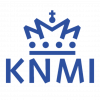Machine Learning Cloud Top Height: An Opportunity or Challenge for the Wind Community?
Within the cloud community the usage of Machine Learning techniques to retrieve cloud products is growing. The high accuracy datasets for active sensors like CALIOP or CPR (CloudSat) can be co-located with imager data and used to train imager cloud products with higher quality compared to traditional methods. Traditional methods of cloud top height would typically return the optical cloud top height, meaning the height at optical depth around 1.0 down in the cloud. Artificial neural network methods can retrieve the actual physical cloud top with higher accuracy. This improvement of cloud products, might cause problems for wind retrievals. But with communication between the communities it can be turned into an opportunity, as ML techniques can as well be trained to predict the optical height of clouds if the benefit of it is identified.
There is ongoing work in NWCSAF to adapt the high resolution winds algorithm used in the GEO software for instrument SEVIRI to the PPS software for polar orbiting imager instruments (AVHRR, MODIS, VIIRS, MERSI-2, MetImage). The GEO software uses a traditional cloud top height, and PPS uses a neural network one. Preliminary results or lessons learnt from this ongoing work will be presented if available. In the presentation also differences between the new neural network cloud top height of PPS and traditional methods will be described, and validation results will be shown.






